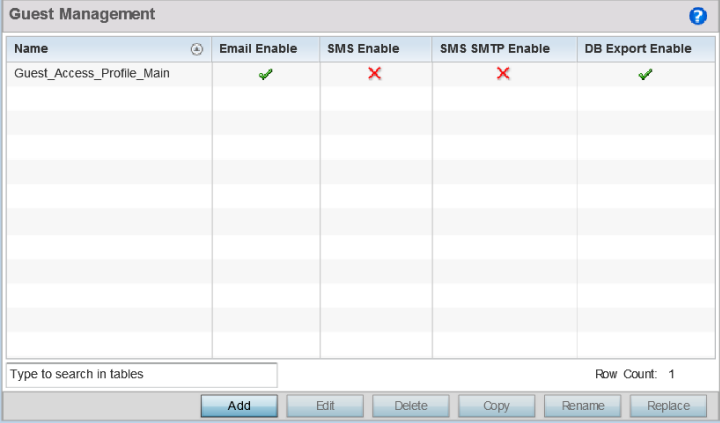Setting the Guest Management Configuration
About this task
A guest management policy is for configuration of E-mail host and SMS gateway related commands along with the credentials required for sending passcode to guest via email and SMS. Configure up to 32 different guest management policies. Each guest management policy allows an administrator to configure the SMS gateway, SMS message body, E-mail SMTP server, E-mail subject contents and E-mail message body. At any point of time, there can be only one guest management policy active per device.
Guest registration is supported on NX9000 series service platforms as an adopting controller with up to 2 million user identity entries. Guest registration is supported on NX 7500 series service platforms as an adopting controller with up to 1 million user identity entries. Guest management and registration is not supported on all other WiNG supported platforms.

Note
An option to backup the guest registration configuration is not available in the user interface. To backup the guest user database, a guest-databasebackup command must be invoked using the CLI. For more information, refer to the WiNG CLI Reference Guide.Refer to the following sections for configuring Guest Management parameters:
To set the guest management configuration:


